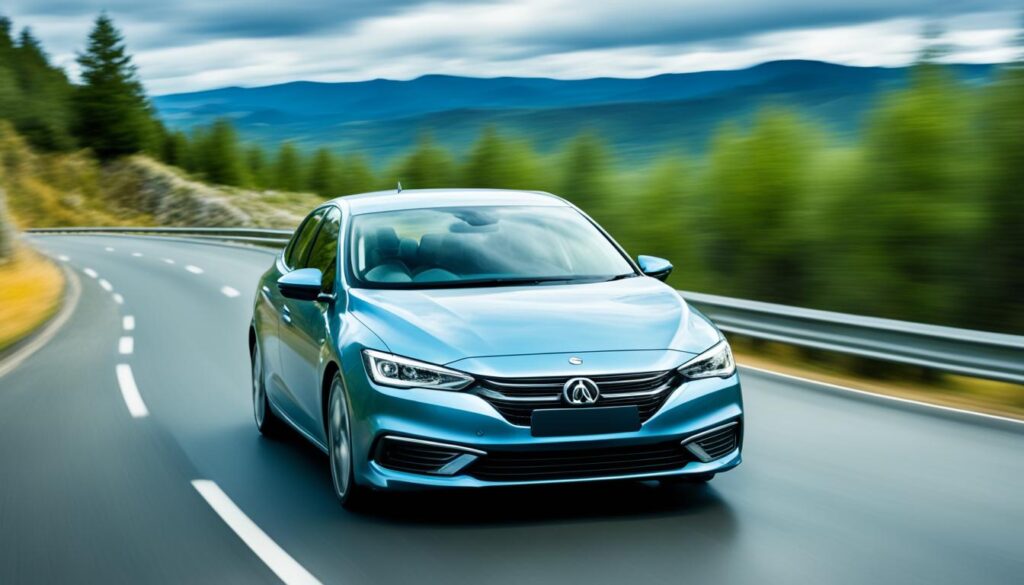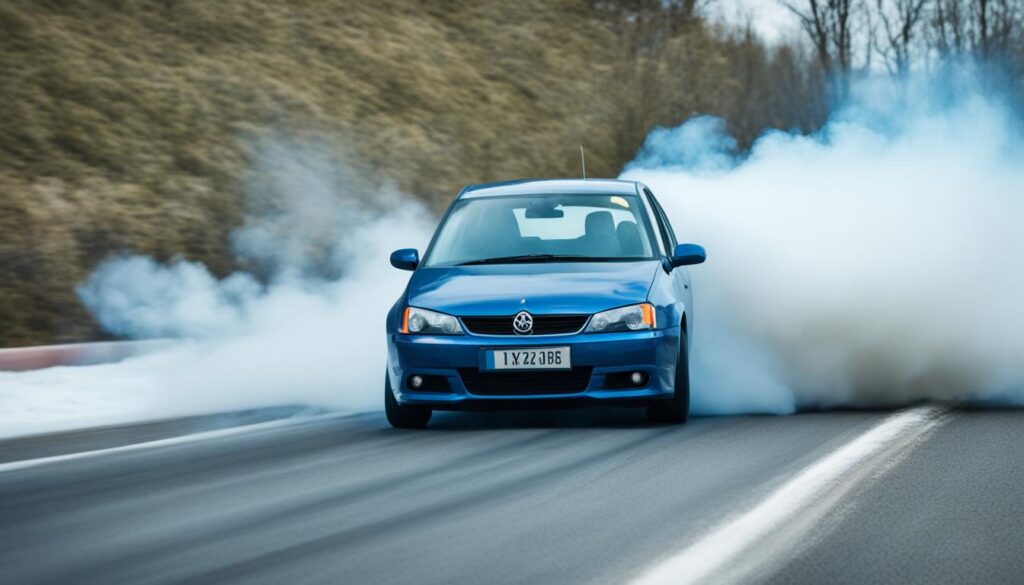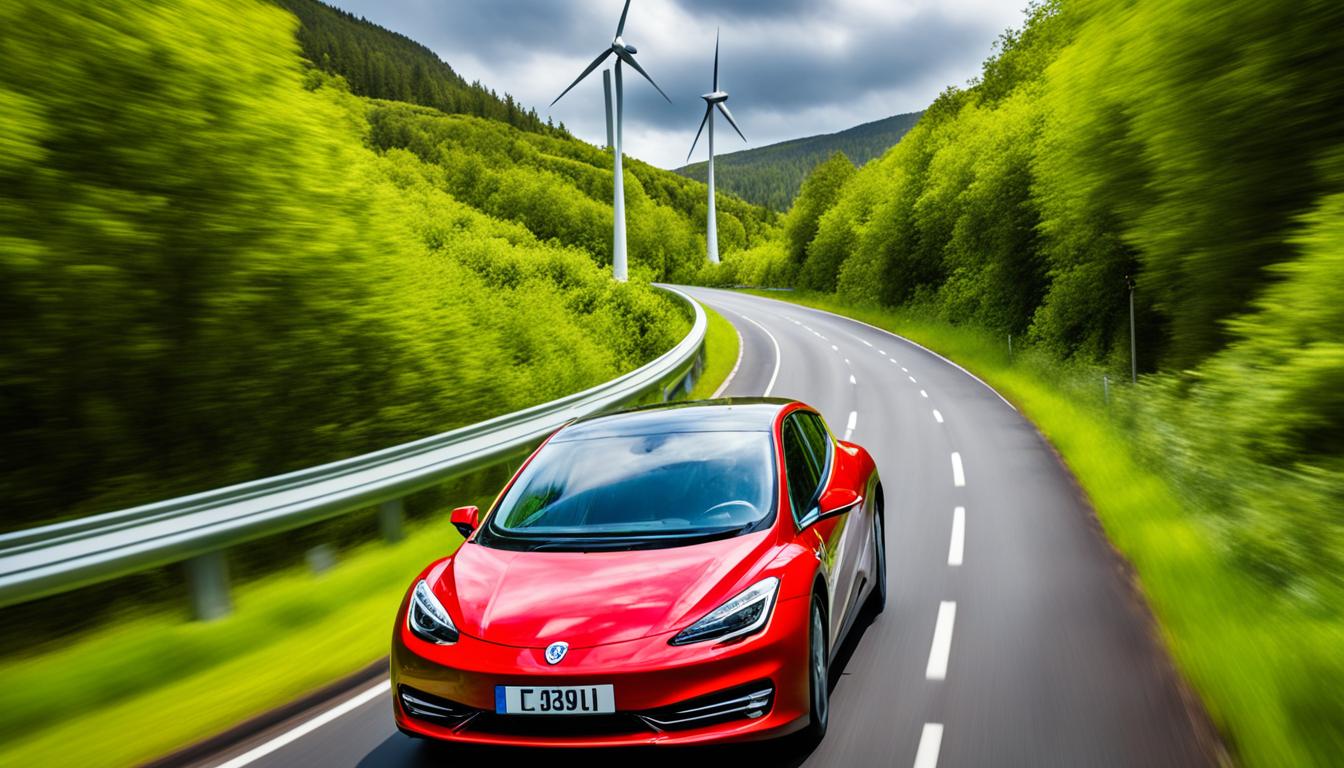Improving your car’s fuel efficiency is easy and saves money on gas. Follow some simple tips in your daily driving. This can make your car run better and use less fuel.
Keeping your tires well-inflated is very important. Low air pressure makes your car use more fuel. Always use the right tire pressure to lower this effect and save gas.
Take out any heavy items from your car. They make your engine work harder and use more gas. A lighter car uses less fuel, especially in the city.
Use the air conditioning to reduce wind drag at high speeds. Driving with the windows down makes your car burn more fuel. At fast speeds, A/C uses less gas than open windows.
Drive smoothly to save gas. Quick starts and sudden stops waste fuel. Keeping a steady speed on the highway can significantly lower your fuel consumption.
Whenever you can, use cruise control. It keeps your speed even and saves gas. Avoiding too much acceleration and braking helps your fuel efficiency.
Try to guess the traffic flow ahead of you. Slow down early if you see a red light. This will use less gas than sudden braking and acceleration.
Avoid traffic when possible to use less gas. Planning your route during busy hours can save fuel. Look for alternative routes to avoid long waits in traffic.
Don’t let your car idle for long as it wastes fuel. If you’ll be stopped for more than a minute, turn off the engine. This can save a lot of gas over time.
Regular car check-ups are vital for fuel efficiency. Change oil and filters on time. This keeps your car healthy and uses less fuel. These small changes can help save gasoline and money.
Keep tires pumped up
Keeping your car’s tires properly inflated is key for fuel efficiency. If they’re underinflated, they create more friction. This friction makes your car use more fuel. In fact, underinflated tires could lower your fuel efficiency by 10% for every mile you drive. So, make sure your tires are at the right pressure to save gas.
It’s easy to keep your tires in check. Just grab a tire pressure gauge from a gas station or store. You can also check your manual or the sticker on your car door for the recommended pressure. Stay on top of this simple task to cut down on fuel use.
Making sure your tires are at the right pressure does more than save gas. It also cuts down on wear and tear, saving you money in the long run. Plus, it keeps you safer on the road by improving how your car grips the pavement.
Benefits of Properly Inflated Tires
Keeping your tires at the right pressure brings many pluses:
- Improved Fuel Efficiency: Well-inflated tires roll easier, cutting down on fuel use.
- Enhanced Safety: Proper tire pressure helps your car handle better and keeps traction strong.
- Extended Tire Life: It evens out wear and adds miles to your tires’ lifespan.
- Smoother Ride: Right tire pressure means less shaking and more comfort while you drive.
- Reduced Carbon Footprint: Lower fuel use equals less harmful emissions, making the planet happier.
Don’t forget to check your tire pressure regularly, at least once a month. This simple task is a big help for your wallet and the planet. It ensures your car runs efficiently and safely every time you hit the road.
Lose the weight in your boot
Every bit counts when we talk about how much gas our car uses. One thing people often forget is the impact of weight on fuel use. Carrying too much in your car means using more gas.
For every 50kg extra weight in your car, you might use 2% more fuel. That’s a significant increase. Think about the extra stuff in your trunk and how it might be affecting your fuel use.
If you have things you don’t need in your trunk, now’s the time to remove them. By doing this, you’ll make your car use less fuel. That means better gas mileage overall.
What about those old sports items or tools you never use? Removing them can lower your gas use and make your car lighter. It’s a simple way to improve your fuel efficiency.
Open your trunk and take out things you don’t need. It’s both good for your wallet and the planet!
Drive with AC
Many think driving with windows down saves gas over using air conditioning. But, at high speeds, open windows create strong wind resistance. This resistance makes the car use more fuel.
Instead of open windows, it’s better for your fuel use to run the air conditioning. The AC lowers wind resistance by keeping the car’s shape smooth. This way, your car uses less fuel to push through the air.
Surprisingly, using the AC can be more gas-saving, especially when driving fast. This happens because the car becomes more aerodynamically efficient, which can balance out AC energy use. Plus, open windows make the journey loud and uncomfortable for long rides.
Choose to use the AC over open windows next time you drive. This will make your trip more peaceful, with less noise and more comfort. And, it’s a great way to save on fuel over time.
| Driving Method | Fuel Efficiency |
|---|---|
| Windows Down at High Speeds | Decreased |
| Using Air Conditioning | Improved |
Don’t go too fast or too slow
It’s key to not speed up too much on the highway to save on gas. When you go fast, the wind pushes against your car. This makes your car use more gas. Going 100 km/h uses up to 15% more gas than going slower. And at 110 km/h, you might use up to 25% more gas.
But, going too slow is not good for saving gas either. If you drive slowly, your car’s engine works harder. It keeps the car moving, which uses more gas. This happens a lot when you’re in a lower gear.
The best speed for saving gas is between 50 and 90 km/h on the highway. At this speed, your car faces less wind. This lets it use gas more efficiently. So, you save money and help the environment.
Impact of Speed on Fuel Consumption
| Driving Speed (km/h) | Percentage Increase in Fuel Consumption |
|---|---|
| 50 | 0% |
| 60 | 5% |
| 70 | 10% |
| 80 | 12% |
| 90 | 15% |
| 100 | 15% |
| 110 | 25% |
| 120 | 30% |
The table shows that after 90 km/h, gas usage goes up a lot. By keeping a moderate, steady speed, you save gas. This also cuts back on pollution, which is good for the planet.

Remain steady when accelerating
How you press the gas really matters for saving fuel. If you push it too hard, the engine needs more fuel. This makes your car use up more gas.
To save fuel, it’s best to press the gas slowly. This way, your car doesn’t use as much gas. Plus, driving feels smoother and easier.
To make your car use less fuel, be gentle on the gas. Gradually press the gas pedal down. This helps the engine work better with less fuel.
Always think about saving gas by driving smoothly. Doing this helps you use fuel smarter. And, it makes your car more efficient.
Avoid braking aggressively
Aggressive braking does more harm than you might think. It uses up more fuel and makes you need to speed up quickly later on. This kind of driving often happens when you’re too close to the car in front. It makes accidents more likely and uses up more gas.
To save on gas and stay safe, keep your distance from the car ahead. By doing this, your drive will be smoother, and you won’t need to brake aggressively as often.
The negative impact of aggressive braking on fuel consumption
Aggressive braking is like hitting “reset” on your fuel use. All that speed you lost means your car has to work extra hard to get it back. This uses more gas, which isn’t good for your wallet.
Be smart with how you brake. Avoid sharp stops. This way, you’ll use less gas and your brakes will last longer, saving you money on repairs.
Tailgating: A recipe for disaster and poor fuel efficiency
Tailgating is both dangerous and bad for gas use. It often leads to sudden stops, making the traffic less smooth and wasting fuel. This bad habit doesn’t help anyone.
Give some space to the car ahead. It gives you time to react, cuts down on accidents, and makes your drive better. You’ll also use less gas and keep the road safer for everyone.
Remember, keeping a safe distance improves safety and saves gas.

Cruise in top gear
To use less fuel, try using cruise control in automatic cars. In manual cars, keep a higher gear. This lowers the car’s engine RPM. As a result, you use less fuel.
Most new cars come with cruise control. It lets you keep a steady speed without using your foot. You just pick the speed, and the car does the rest. This makes your fuel go farther.
Turning on cruise control in automatic cars is easy. Just pick the speed you want, and the car does the rest. This keeps your driving smooth and saves fuel.
In manual cars, driving in a higher gear can also save fuel. A higher gear means the engine turns slower. This uses less gas.
Using cruise control on the highway is good for automatic cars. For manual cars, it’s better to use a higher gear. Both ways keep your speed and engine RPM steady. This saves fuel.
| Cruise Control | Maintaining Higher Gear | |
|---|---|---|
| Benefits |
|
|
| Usage | Mostly automatic cars | Manual cars |
Using cruise control in automatic cars and staying in a higher gear in manuals helps save gas. Make these your driving habits. You’ll enjoy using less fuel and spending less money.
Conclusion
Using these fuel-saving tips can really help you. Your car will use less gas and you’ll save money. Make sure your tires are at the right pressure and take out things you don’t need. When driving fast, use AC instead of opening the window. Also, try to keep a steady speed on the highway. These steps are practical and save fuel.
It’s smart to drive smoothly and use cruise control. Look ahead to see what’s coming and plan your route to avoid traffic. Don’t let your car idle too long. Doing these things will help your car use less gas. Make sure to service your car often for the best gas mileage.
Using these tips not only saves you money but also helps the environment. Take charge of how much gas your car uses. You’ll see your wallet and the planet benefit. It’s a win-win situation by driving smarter.
FAQ
How can I improve my car’s fuel efficiency?
To make your car more fuel efficient, start by ensuring your tires are well inflated. Take out any extra weight from your car’s trunk. When driving fast, use the AC instead of opening windows. Try to keep a steady speed on the highway and stop fast driving and braking. Setting cruise control can also help you use gas more efficiently.
Moreover, try to drive carefully and predictively. Avoid traffic jams during busy times and cut down on long idle times. Regular maintenance on your car is crucial for keeping up your fuel efficiency.
Why is maintaining tire pressure important for fuel efficiency?
It’s very important to keep your car’s tires at the right pressure for good gas use. Tires that are underinflated make your car work harder. This increases how much gas you use. By just inflating your tires correctly, you can start saving gas.
How does carrying extra weight affect fuel efficiency?
Having too much stuff in your car makes it use more gas. For each 50 kg over what’s needed, you’ll burn 2% more fuel. So, to save gas, clean out your car’s trunk of anything you don’t really need.
Is it better to drive with the windows down or use the air conditioning?
Running the AC when driving fast actually saves more gas than rolling the windows down. Air resistance from windows being open at speed makes your car use extra gas. So, to be more fuel efficient, choose AC over wind.
How does driving speed affect fuel economy?
Driving at a steady speed helps save gas on the highway. Going 100 km/h uses 15% more gas than at 90 km/h. At 110 km/h, it’s 25% more. Speeding up and slowing down too much also uses more fuel. So, try to maintain a speed between 50 and 90 km/h for the best economy.
How should I accelerate to improve fuel economy?
Revving your car’s engine high when you accelerate wastes gas. A better tactic is to speed up slowly. This keeps your engine from working too hard, saving fuel.
Why should I avoid aggressive braking?
Braking hard and often makes you use more gas. You’ll need to step on the gas harder later to get back up to speed, burning extra fuel. Plus, it’s unsafe to tailgate. Avoiding it is better for fuel use and safety.
How can cruise control help improve fuel efficiency?
If your car has cruise control or you can maintain a higher gear in a manual, you’ll use less gas. This keeps your engine’s RPMs lower, improving fuel efficiency.
What are some other tips for improving fuel efficiency?
Always look ahead and drive smoothly to ease off the gas when you see a red light. Plan your drive to avoid traffic. Both these tactics save fuel. Also, don’t let your car idle for too long. Little efforts like this add up to big savings on gas. Plus, have your car checked regularly to keep it running efficiently.
How can these tips help me save money on fuel?
Following these tips can lead to big savings in gas. From maintaining proper tire pressure and a clean trunk, to wisely using the AC at high speeds. Combine this with careful driving. Take advantage of cruise control and plan your routes smartly. And don’t forget regular car check-ups. Doing all this will make your gas last longer, saving you money.


















